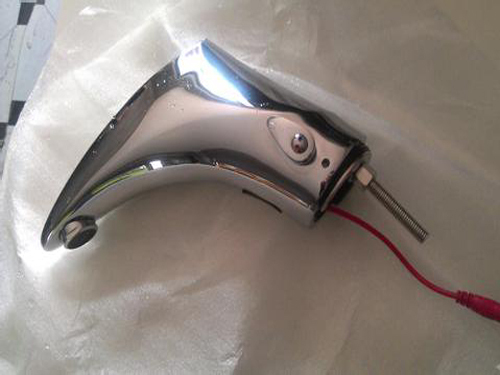
The researchers described this new strategy in detail in the November 13 issue of the journal Science. Lu Guanda said that it overcomes some of the limitations of existing methods for storing memory in the bacterial genome. Current methods require a large number of genetic regulatory elements, which limits the amount of information that can be stored.
Early research work was also limited to digital memory, which meant that they could only store all-or-nothing memories, such as whether a particular event would occur. Lu Guanda and Fahim Farzadfard, a graduate student of the dissertation, plan to build a system that can store analog memory, which can reveal the degree of exposure and duration. To this end, they designed a "genome recorder" that allows researchers to write early information into all bacterial DNA sequences.
Stable memory To program E. coli to store memory, MIT researchers engineered cells to produce a recombinase that can insert DNA or specific single-stranded DNA sequences into target sites. This DNA can only be activated when there is a predetermined molecule or other type of input signal such as light.
After the DNA is produced, the recombinase inserts this DNA into a preprogrammed site in the genome of the cell. "We can target any position in the genome, which is why we see it as a recorder because you can control where the signal is written," Lu Guanda said.
Once the next exposure is recorded through this process, this memory can be stored in the flora for a lifetime and passed down from generation to generation.
There are several different ways to retrieve this stored information. If the DNA is inserted into a non-functional region of the genome, sequencing the genome will reveal whether this memory is stored in a particular cell. Or researchers can target these sequences to change a gene. For example, in this study, the new DNA sequence opened an antibiotic resistance gene. The researchers determined how many cells got this memory sequence by adding antibiotics to cells and observing the number of cell survival.
By measuring the proportion of cells in this population with this DNA sequence, researchers can determine the extent of exposure and how long it lasts. Lu Guanda said that in this article, researchers used this system to detect light, a lactose metabolite called IPTG, and an antibiotic derivative aTc. It can also be customized into many other molecules or signals generated by cells.
This information can also be erased by stimulating cells or integrating different DNA fragments into the same site. The current process is not yet very efficient, but researchers are working to improve it.
Bacterial sensors Such sensors can be put into environmental applications, including monitoring the ocean's carbon dioxide levels, acidity or pollutants. In addition, it is also possible to design some bacteria that live in the human digestive tract to detect a person's dietary intake, such as how much sugar or fat they consume, or to detect the inflammation caused by irritable bowel syndrome.
Lu Guanda said that these genetically modified bacteria can also be used as biological computers, which are especially suitable for various calculations that require a lot of parallel processing, such as identifying image patterns. Get free information on the EMD Millipore Stericup & Steritop Sterile Filtration Unit for High-Flow, High-Throughput, High-Specific Protein Adsorption "Because there are billions of bacteria in one test tube, we are now starting to use more of this flora. To store memory and perform calculations, it may be interesting to perform highly parallel calculations. It may be slow, but it may also be energy-saving,†he said.
Another possible application is the manipulation of brain cells in living animals or human cells grown in petri dishes, which will enable researchers to track whether a disease marker or a neuron is activated at a certain time. . "If you can convert the DNA inside a cell into a small storage device and then associate it with something you care about, you can write this information and then extract it," Lu Guanda said.
Komaes Solar is a specialized manufacturer of Solar Panels since 2004, our Solar Modules are certified by TUV IEC (Germany), MCS (UK), CEC (Australia), CE (SGS), SCONAP (Nigeria), INMETRO (Brazil), etc. The range is from 5W to 350W, both Polycrystalline and Monocrystalline Solar Panels, include build-in junction boxes, tempered glass, and solid aluminum frames. At present, we are exporting solar modules to Europe, Australia, USA, and some other districts. KOMAES solar panels are durable, high-efficiency. The solar panels are available for RVs, boats, Camping, and Remote off-grid power systems, our customers often use for remote transmitters, battery charging, electric gate openers, RVs, marine, etc.
Komaes current brightest LED Light bulb for DC 12 Volt to 24 Volt, comsuming only 33 watts , but as bright as a 200 watt traditional incandescent light bulb. Your low voltage battery system will love this bulb's amp draw vs brightness. Reliability is standard with our bulbs , you can trust that it will be lighting and brightening you up for years to come. Our heavy duty bulb is designed with a constant current driver.
LED Light
LED Light,DC LED Lights,DC LED Lights 12V,DC LED Light Fixture
NINGBO KOMAES SOLAR TECHNOLOGY CO., LTD. , http://www.komaes-solar.com
